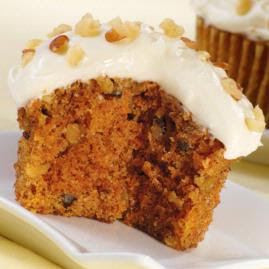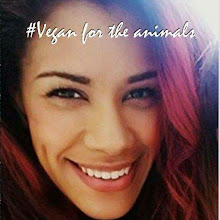annnnd Amanda has chosen to go meat-free for good!!!
When I told her that today was her 1 month vegetarian anniversary, she couldn't believe it! She said, "In that case, this is EASY!" That was so wonderful to hear!! So from time to time, I'll continue stories about our journey, recipes we love, and info I find useful.
The most common question I've gotten lately is why Amanda decided go become a vegetarian. I've never believed that it was my place to force my values as it's a highly personal and individual decision to make. But in a survey I recently read, it said that the majority of people gave up meat and fish because they did not morally approve of killing animals, or because they objected to the ways in which animals are kept, treated and killed for food.
With the growing awareness of the importance of healthy food, many people are also becoming vegetarian because it matches the kind of low fat, high fiber diet recommended by dieticians and doctors. Concern about the environment is another factor as people become more aware of the effect raising animals for their meat is having on the environment. Or you may be concerned about wasting world food resources by using land to raise animals for meat instead of growing crops that can feed more people directly.
Someone asked me what it meant that we were vegetarian now. They thought we didn't eat any dairy either. That got me thinking of the many differences there are in the meat-free spectrum. Here's some info on vegetarianism that explains the differences a little more.........
For much of the world, vegetarianism is largely a matter of economics: Meat costs a lot more than, say, beans or rice, so meat becomes a special-occasion dish (if it's eaten at all). Even where meat is more plentiful, it's still used in moderation, often providing a side note to a meal rather than taking center stage.
In countries like the United States where meat is not as expensive, though, people choose to be vegetarians for reasons other than cost. Parental preferences, religious or other beliefs, and health issues are among the most common reasons for choosing to be a vegetarian. Many people choose a vegetarian diet out of concern over animal rights or the environment. And lots of people have more than one reason for choosing vegetarianism.
Vegetarian and Semi-Vegetarian Diets
Different people follow different forms of vegetarianism. A true vegetarian eats no meat at all, including chicken and fish. A lacto-ovo vegetarian eats dairy products and eggs, but excludes meat, fish, and poultry. It follows, then, that a lacto vegetarian eats dairy products but not eggs, whereas an ovo vegetarian eats eggs but not dairy products.
A stricter form of vegetarianism is veganism (pronounced: vee-gun-izm). Not only are eggs and dairy products excluded from a vegan diet, so are animal products like honey and gelatin. Or avoids lanolin, beeswax & carmine in bath & beauty products....like Lotions & Potions!
So we officially have a vegetarian family!! Here are two of our favorite recipes from the past month. I'll post some more of our favorites soon!! Enjoy!
Vegetarian Paella
Having never tried paella, I think it turned out quite yummy!
Ingredients
nocoupons
- 8 vine-ripened plum tomatoes
- Kosher salt
- 1/4 cup extra-virgin olive oil, plus more for drizzling
- 1 small onion, finely chopped
- 3 cloves garlic, finely chopped
- 1 1/2 teaspoons paprika
- 1/4 teaspoon cayenne pepper
- 1 teaspoon saffron threads
- 1 large bulb fennel, cut into 8 wedges (I left this out)
- 8 baby artichokes, trimmed and halved (I used canned)
- 1 large Japanese eggplant, cut into 2-inch pieces
- 4 ounces shiitake mushrooms, stemmed
- 2 cups dry white wine
- 2 1/2 cups short-grain paella rice
- 4 ounces string beans, halved if large
- 1/4 cup capers, drained
- 1/4 cup piquillo or roasted red peppers, cut into strips
- Chopped fresh parsley, for garnish (optional)
Directions
- Preheat the oven to 450 degrees. Core the tomatoes, cut into wedges and place in a medium bowl; season with salt, drizzle with a bit of olive oil and toss. Set aside.
- Heat 1/4 cup olive oil in a 12-inch ovenproof skillet or a paella pan over medium-high heat. Add the onion, garlic, paprika, cayenne and saffron and season with salt. Cook, stirring occasionally, until the onion softens, about 5 minutes.
- Add the fennel wedges and cook until lightly browned on one side, about 5 minutes. Flip the fennel and add the baby artichokes and eggplant to the skillet; cook until slightly tender, about 4 more minutes. Add the mushrooms and cook for 1 to 2 minutes.
- Pour in the wine and simmer until reduced by about one-third. Stir in the rice and 1 3/4 teaspoons salt; add just enough water to cover the rice completely, 2 1/2 to 3 cups. Increase the heat to high and boil for 2 to 3 minutes.
- Scatter the green beans and 2 tablespoons capers over the rice. Remove the pan from the heat and arrange the tomatoes on top; drizzle with any tomato juices.
- Transfer the paella to the oven and bake, undisturbed, for 20 minutes. Scatter the remaining 2 tablespoons capers and the peppers over the paella. Turn off the oven but leave the paella inside to continue cooking until the rice is tender, 15 to 20 more minutes. Garnish with parsley, if you'd like!
THE VERDICT:
Vic: "The recipe is enough to feed an army. It works great on it's own. It's incredibly flavorful (as long as you remember to season with each added layer of vegetable) and a great way to get even your kids to eat veggies!"
"Amanda: "Pie-YAY-uh!!"
Sweet Potato & Black Bean Burritos
We've been making these for a long time and
they're absolutely delicious!
- 5 cups peeled cubed sweet potatoes
- 1/2 teaspoon salt
- 2 teaspoons canola or other vegetable oil
- 3-1/2 cups diced onions
- 4 large garlic cloves, minced or pressed
- 1 Tablespoon minced fresh green chile (I left this out)
- 4 teaspoons ground cumin
- 4 teaspoons ground coriander
- 4-1/2 cups cooked black beans (three 15-ounce cans, drained)
- 2/3 cup lightly packed cilantro leaves
- 1 cup shredded cheddar jack cheese
- 2 Tablespoons fresh lemon juice
- 1 teaspoon salt
- 8 eight-inch flour tortillas
- Fresh tomato salsa or jarred (optional)
- Sour cream (optional)
Preparation:
Preheat the oven to 350 degrees F. Place the sweet potatoes in a medium saucepan with the salt and water to cover. Cover and bring to a boil, then simmer until tender, about 10 minutes. Drain and set aside.
While the sweet potatoes are cooking, warm the oil in a medium skillet or saucepan and add the onions, garlic & chiles.
Cover and cook on medium-low heat, stirring occasionally, until the onions are tender, about 7 minutes. Add the cumin and coriander and cook for 2 to 3 minutes longer, stirring frequently. Remove from the heat and set aside.
In a food processor, combine the black beans, cilantro, lemon juice, salt, and cooked sweet potatoes and puree until smooth. (You can also mash the ingredients in a large bowl by hand using a potato masher. The result will be a less smooth but nicely textured filling.) Transfer the sweet potato mixture to a large mixing bowl and mix in the cooked onions and spices.
Lightly oil a large baking dish. Spoon about 2/3 to 3/4 cup of the filling in the center of each tortilla, sprinkle some cheese on top, roll it up, and place it, seam side down, in the baking dish. Cover tightly with foil and bake for about 30 minutes, until piping hot. Serve topped with salsa &/or sour cream.
THE VERDICT:
Vic: "I'm pretty sure that if you left the coriander leaves out, the sweet potato mixture would be good for freezing if you have leftovers or make up extra on purpose. Amanda loves to take them to work for lunch. It's also a great meal to make for friends as you can make it way ahead and just heat them up in the oven."
Amanda: "I love these - oldies but godies!!"


























